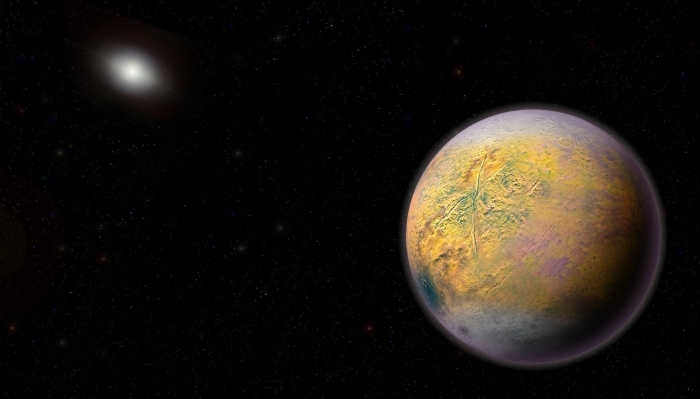The discovery was made while researchers hunted for Planet X, a hidden world that astronomers think is lying undiscovered in our own solar system. Scientists have long thought and hoped that such a strange world is lying in the dark at the edge of our neighbourhood, but no proof has yet been discovered.
The new object appears to suggest that is the case: it has an orbit that seems to suggest there is a Super-Earth wobbling it from afar.
"These distant objects are like breadcrumbs leading us to Planet X," said Scott Sheppard, the Carnegie astronomer who helped lead the research. "The more of them we can find, the better we can understand the outer Solar System and the possible planet that we think is shaping their orbits — a discovery that would redefine our knowledge of the Solar System's evolution.
The researchers ran simulations of the orbit of the new object, in an attempt to understand how it would be affected by the hypothetical Planet X. They found that a mysterious planet of the kind previously suggested — a huge Super-Earth on a very wide orbit — fit with the way that their new find was moving through the solar system.
The newly discovered object is called 2015 TG387, is probably a small dwarf planet at just 300km across, and is incredibly far away. It is currently lying about two and a half times further away from the Sun than Pluto is.
It often reaches much further away. Its orbit takes it to about 2,300 AU — that is 2,300 times as far away from the sun as we are, and vastly more than the already huge 34 AU that the distant Pluto sits at.
At that distance, 2015 TG387 is one of the few known objects that is so far away that its orbit is not affected by even the giant planets in our solar system like Neptune and Jupiter.
"These so-called Inner Oort Cloud objects like 2015 TG387, 2012 VP113, and Sedna are isolated from most of the Solar System's known mass, which makes them immensely interesting," said Sheppard. "They can be used as probes to understand what is happening at the edge of our Solar System."
The object is one of the strangest things that astronomers have ever spotted within our own solar system. But there could be many more of them than we have ever realised, the researchers said.
"We think there could be thousands of small bodies like 2015 TG387 out on the Solar System's fringes, but their distance makes finding them very difficult," said the University of Hawaii's David Tholen. "Currently we would only detect 2015 TG387 when it is near its closest approach to the Sun. For some 99 percent of its 40,000-year orbit, it would be too faint to see."
The new discovery is being announced by International Astronomical Union's Minor Planet Center. A paper with full details has been submitted to the Astronomical Journal.
The Independent
More about: PlanetX
















































